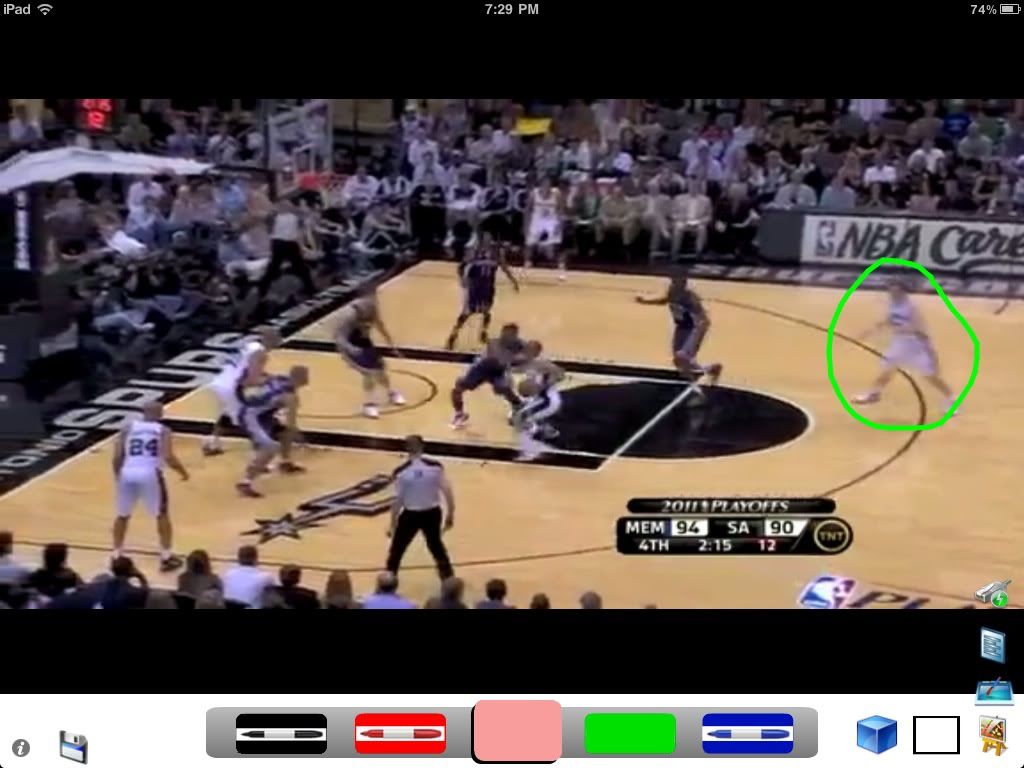Matt Bonner is a unique member of the San Antonio Spurs.
He isn’t necessarily your average NBA big man. On most teams, he may not even get much playing time. But with the Spurs, he’s a crucial cog in the team’s offense.
Having Bonner on the floor helps the team on offense because he is able to open the paint by hanging out on the perimeter, which leaves room for the penetrating guards to wreak havoc and either score or kick out to the shooters.
However, using Bonner is a gamble. He is built as a 6’10, 235 pound power forward that is undersized on the defensive end. He lacks the body size to stop heavier centers and forwards from being dominant in the paint and he isn’t fast enough to stop athletic forwards from escaping his sight and going up for an alley-oop dunk.
Is this Bonner’s fault? No it’s not his fault his offensive skill set matches the Spurs’ offensive system so well yet hurts the team on the other side of the ball.
We know what Bonner can do, so now how can he improve?
The first place Bonner can look to improve is on the offensive end with his shooting. Here are his regular season statistics:
Regular Season: 66 GP, 21.7 MPG, 7.3 PPG, 3.6 RBD (2.7 Defensive), 46% FG, 46% 3PT (1.6/3.5 3PT), 0.32 BLK, 1.7 FPG, +13.5 PER.
To shoot 46% from three-point distance is really good in the NBA, but Bonner’s shot percentage did decline toward the end of the season. If you observe the chart below, the gap between three point shots made and shots attempted began to widen toward the end.
So then what happened when the playoffs came?
A lot of the limited shots that Bonner was given didn’t fall. For every one shot that went in, he’d miss two. In the playoffs, the opportunity for open shots became scarce as the Grizzlies’ defense on the perimeter really limited the Spurs’ penetrate-and-kick game.
As you can see from his playoff averages, Bonner’s three point percentage decreased by 13% in the playoffs.
Playoffs: 6 GP, 20.5 mpg, 6.3 ppg, 3.2 rbd, 48% FG, 33% 3PT (1/3 3PT), 0.17 blk, 3 FPG.
Here’s a sequence from game one of the playoffs versus Memphis. Tony Parker drives the ball inward. Matt Bonner is circled in green.
Parker will then get consumed by the defense and kick out to a wide-open Bonner for the three pointer.
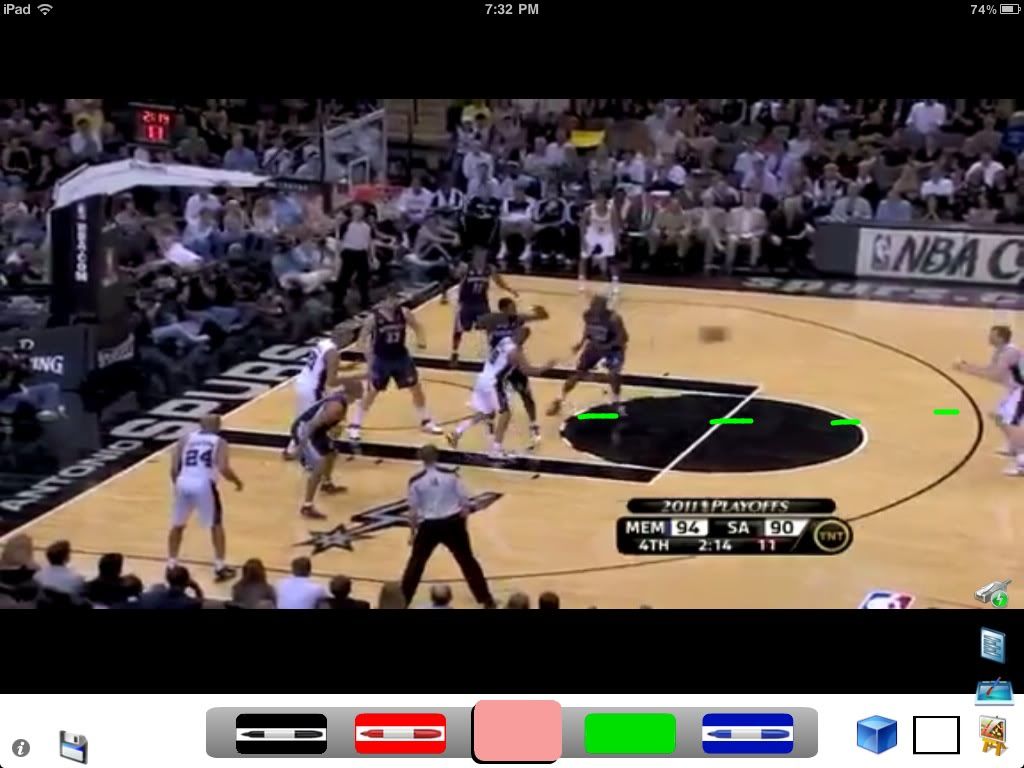
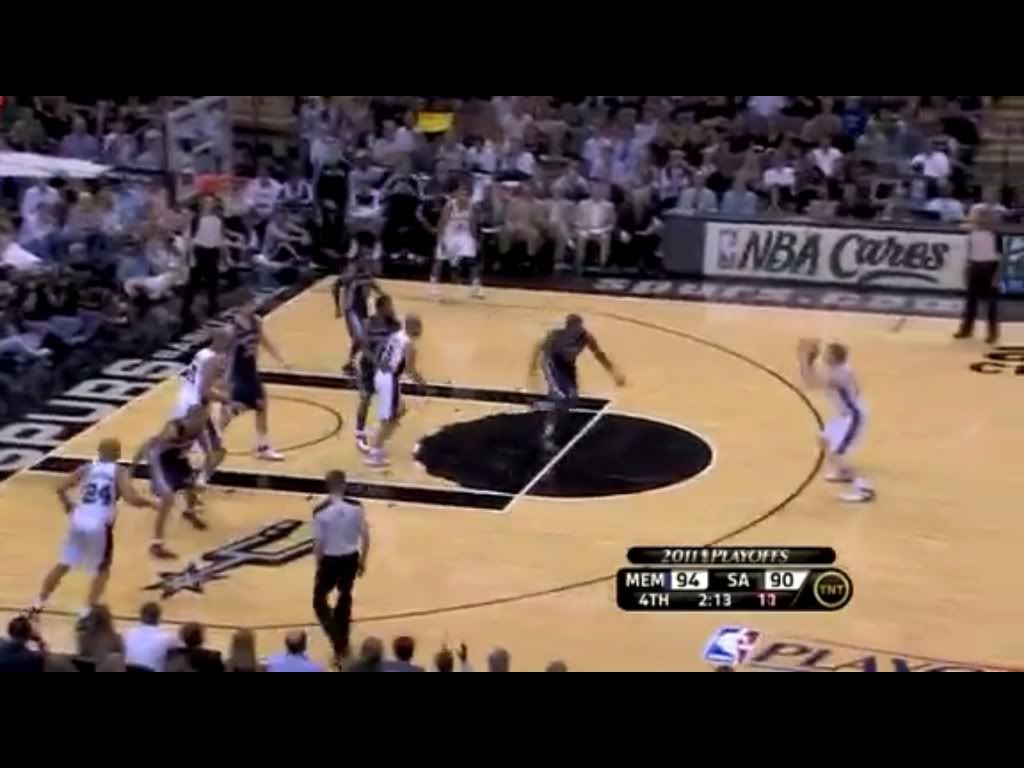
To illustrate this, watch this play from game four versus Memphis. Tim Duncan sets a screen for Parker, who will either be looking to penetrate and get to the rim or feed Duncan. Those are the two options that the play is designed for, however, Memphis shuts off Parker’s penetrating lane and Duncan’s roll out lane. 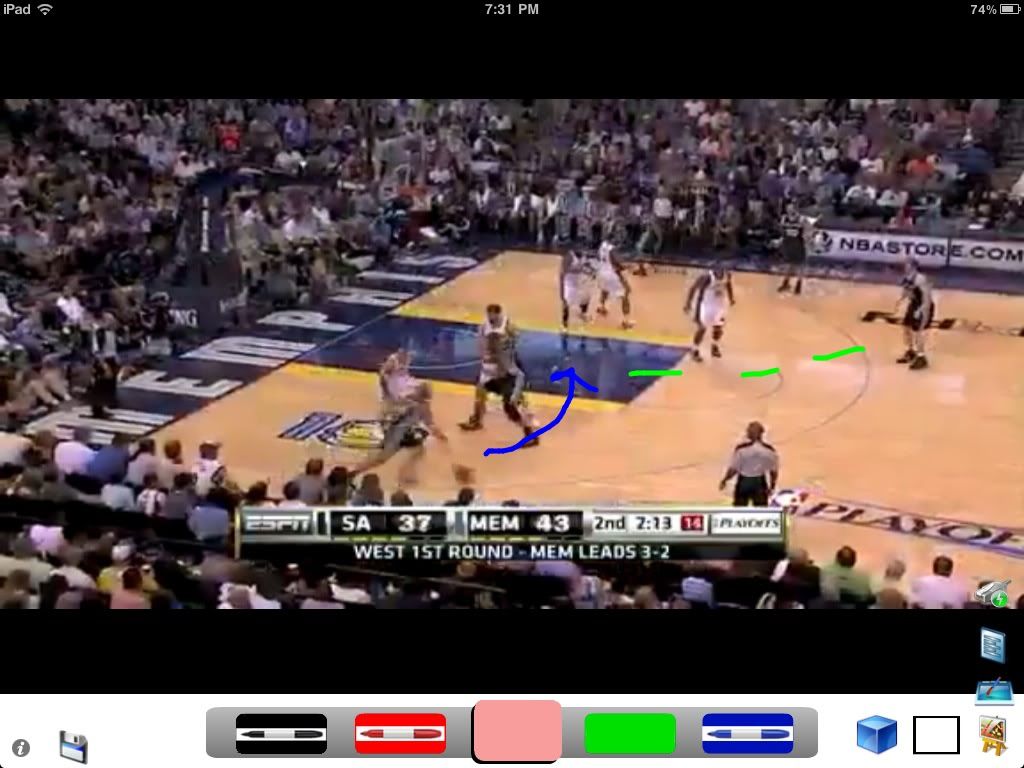
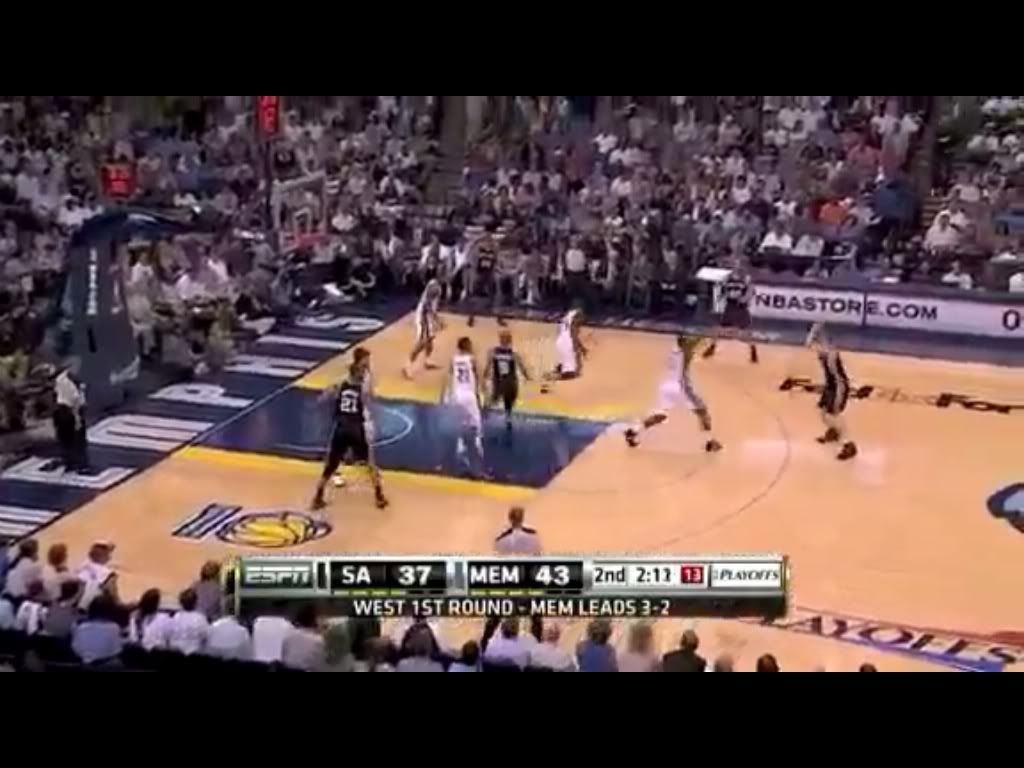
To illustrate this point, watch this play from game six. Zach Randolph gets into position to post Bonner about 15-feet away from the basket.
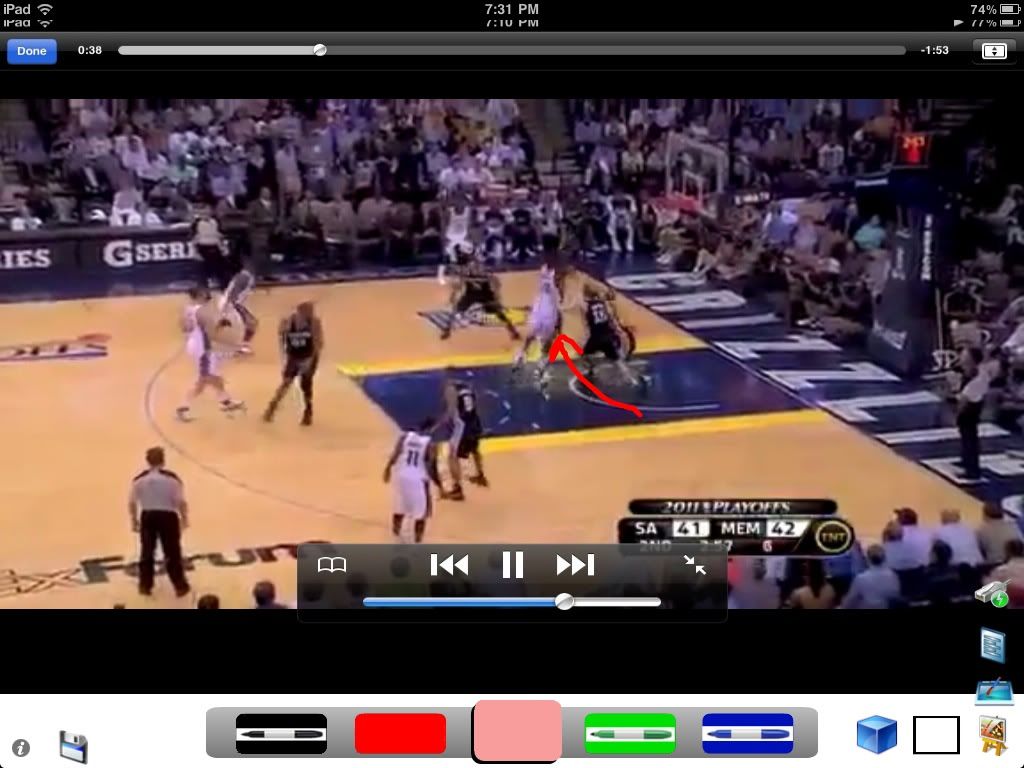
Thus scoring the basket over Bonner; who was beat before the move even took place.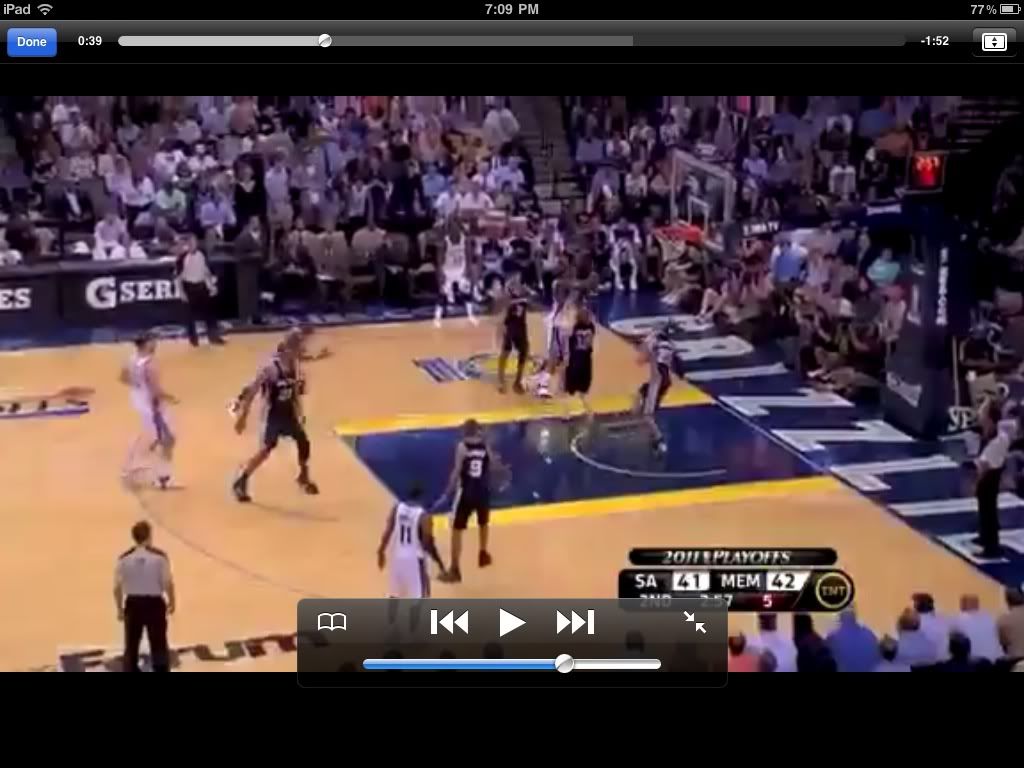
In the playoffs, he went from fouling 1.7 times per game during the regular season to three times per game in the playoffs. Bonner is a very intelligent player; he will have to use his IQ as a counter to the lack of physical talent that makes it tough for him on the defensive end.
Bonner is still under contract for three more seasons with the team. He fits the Spurs’ offensive system and will need to continue to give the production that he normally does. In the playoffs however, those three point shots are very critical and he will need to hit them with the best possible accuracy and consistency that he has next season. As far as his defensive limitations, it’s unclear if the team will bring in more help on the front line, but for now Bonner must do his best to limit post player’s from using their physical advantage on him to the best of his ability.
“Coach B” is a teacher for young basketball players out there; yet his greatest example will show when he becomes the “Red Rocket” on the court.
Check out the Room For Improvement series: DeJuan Blair, James Anderson, Da’Sean Butler, Danny Green, and Gary Neal.
Follow Paul on Twitter for fastest breaking Spurs news: @24writer. Email him: [email protected].
(Photo: Daylife.com)
Add The Sports Daily to your Google News Feed!

